
A Baby Weight Chart During Pregnancy in Grams is an essential tool that provides mothers with a clear picture of their baby’s development, offering guidance and comfort throughout each trimester.Tracking your baby’s growth during pregnancy is one of the most exciting and reassuring aspects of the journey to motherhood. Understanding the changes in your baby’s weight week by week not only helps you stay informed but also strengthens the bond with your little one.
In this article, we’ll explore a detailed Baby Weight Chart During Pregnancy in Grams, giving you valuable insights into what to expect at every stage. Whether you’re a first-time mom or expecting another bundle of joy, this chart will help you monitor your baby’s growth and feel connected to their progress.
Table of Contents
Baby Weight Chart During Pregnancy in Grams
Tracking your baby’s growth in the womb is a vital part of a healthy pregnancy. Fetal growth is assessed by measuring the baby’s length and weight through ultrasound. During each examination, except the first one when measurements are not possible, doctors provide these details to ensure your baby is developing as expected.
However, many pregnant women face challenges understanding what the numbers mean. The lack of familiarity with average fetal weight and length for each gestational period can cause confusion and unnecessary worry about whether their baby is growing properly.
To help address this, we’ve created a comprehensive Baby Weight Chart During Pregnancy in Grams to guide expectant mothers. This chart provides clear and reliable information about the average fetal length and weight for every stage of pregnancy, offering reassurance and clarity.
With our Baby Weight Chart During Pregnancy in Grams, you can confidently monitor your baby’s development and stay informed throughout your pregnancy journey.
| Gestational Age | Length (cm) | Weight (g) | Length (inches) | Weight (ounces) |
|---|---|---|---|---|
| 8 weeks | 1.6 | 1 | 0.6 | 0.04 |
| 9 weeks | 2.3 | 2 | 0.9 | 0.07 |
| 10 weeks | 3.1 | 4 | 1.2 | 0.1 |
| 11 weeks | 4.1 | 7 | 1.6 | 0.2 |
| 12 weeks | 5.4 | 14 | 2.1 | 0.5 |
| 13 weeks | 7.4 | 23 | 2.9 | 0.8 |
| 14 weeks | 8.7 | 43 | 3.4 | 1.5 |
| 15 weeks | 10.1 | 70 | 4 | 2.5 |
| 16 weeks | 11.6 | 100 | 4.6 | 3.5 |
| 17 weeks | 13 | 140 | 5.1 | 4.9 |
| 18 weeks | 14.2 | 190 | 5.6 | 6.7 |
| 19 weeks | 15.3 | 240 | 6 | 8.5 |
| 20 weeks | 25.6 | 300 | 10 | 10.6 |
| 21 weeks | 26.7 | 360 | 10.5 | 12.7 |
| 22 weeks | 27.8 | 430 | 10.9 | 15.2 |
| 23 weeks | 28.9 | 500 | 11.4 | 17.6 |
| 24 weeks | 30 | 600 | 11.8 | 20.8 |
| 25 weeks | 34.6 | 660 | 13.6 | 24 |
| 26 weeks | 35.6 | 760 | 14 | 27.2 |
| 27 weeks | 36.6 | 875 | 14.4 | 30.4 |
| 28 weeks | 37.6 | 1000 | 14.8 | 35.2 |
| 29 weeks | 38.6 | 1100 | 15.2 | 40 |
| 30 weeks | 39.9 | 1300 | 15.7 | 46.4 |
| 31 weeks | 41.1 | 1500 | 16.2 | 52.8 |
| 32 weeks | 42.4 | 1700 | 16.7 | 59.2 |
| 33 weeks | 43.7 | 1900 | 17.2 | 67.2 |
| 34 weeks | 45 | 2100 | 17.7 | 75.2 |
| 35 weeks | 46.2 | 2400 | 18.2 | 84.8 |
| 36 weeks | 47.4 | 2600 | 18.7 | 91.2 |
| 37 weeks | 48.6 | 2900 | 19.1 | 100.8 |
| 38 weeks | 49.8 | 3000 | 19.6 | 108.8 |
| 39 weeks | 50.7 | 3300 | 20 | 115.2 |
| 40 weeks | 51.2 | 3500 | 20.2 | 121.6 |
| 41 weeks | 51.5 | 3600 | 20.3 | 126.4 |
| 42 weeks | 51.7 | 3700 | 20.3 | 129.6 |
MEASURING YOUR PREGNANCY
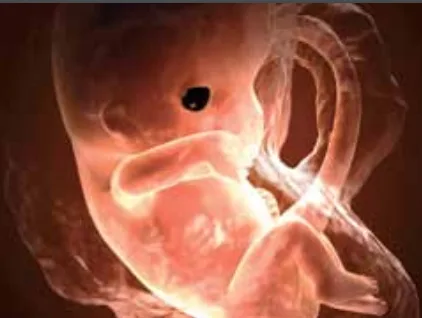
Doctors and midwives in the UK measure the duration of pregnancy from the first day of your last menstrual period, not from the day you conceive. So when you are ‘four weeks pregnant’, it is actually about two weeks after you conceived. Pregnancy normally lasts for 37–42 weeks from the first day of your last period. The average is 40 weeks.
If you are not sure about the date of your last period, then your early scan will give a good indication of when your baby will be due. In the very early weeks, the developing baby is called an embryo. From about eight weeks, it is called a fetus.
1. Week 3
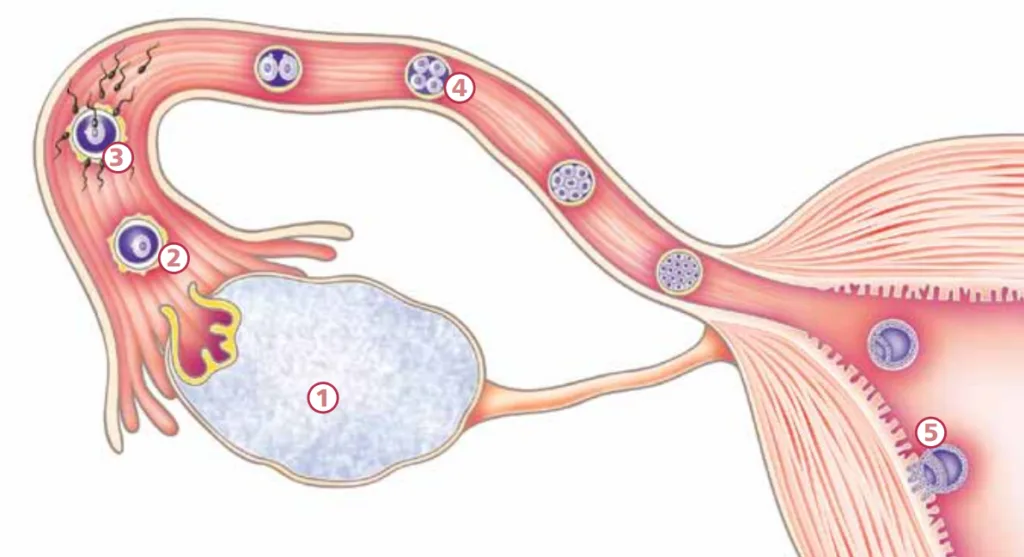
This is three weeks from the first day of your last period. The fertilised egg moves slowly along your fallopian tube towards your uterus. It begins as one single cell, which divides again and again. By the time the fertilised egg reaches your uterus, it has become a mass of over 100 cells, called an embryo. It is still growing. Once in your uterus, the embryo attaches itself to your uterus lining. This is called implantation.
2. Weeks 4-5

The embryo now settles into your uterus lining. The outer cells reach out like roots to link with your blood supply. The inner cells form two—and then later three—layers. Each of these layers will grow to be different parts of your baby’s body.
One layer becomes their brain and nervous system, skin, eyes, and ears. Another layer becomes their lungs, stomach, and gut. The third layer becomes their heart, blood, muscles, and bones. The fifth week is when you will miss your period. At this time, most women are only just beginning to think they may be pregnant.
3. Weeks 6-7
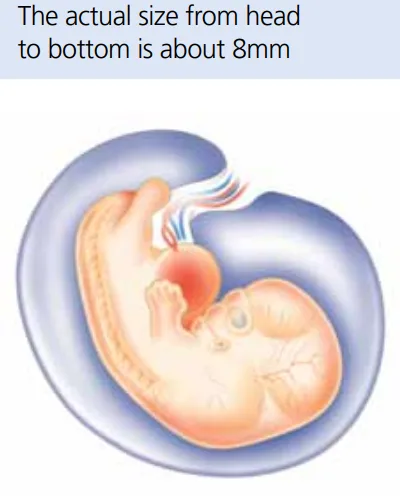
There is now a large bulge where your baby’s heart is and a bump for the head because the brain is developing. The heart begins to beat and can be seen beating on an ultrasound scan. Dimples on the side of the head will become the ears and there are thickenings where the
eyes will be. On the body, bumps are forming that will become muscles and bones. And small swellings (called ‘limb buds’) show where the arms and legs are growing. At seven weeks, the embryo has grown to about 10 mm long from head to bottom. This measurement is called the ‘crown-rump length’.
4. Weeks 10-14

Just 12 weeks after conception, the fetus is fully formed. Your baby has all of their organs, muscles, limbs, and bones, and their sexual organs are developed. From now on, your baby will grow and mature. Your baby is already moving about, but you will not be able to feel movements yet.
By about 14 weeks, your baby’s heartbeat is strong and can be heard by an ultrasound scanner. The heartbeat is very fast—about twice as fast as a normal adult’s heartbeat. At 14 weeks, the baby is about 85mm long from head to bottom. Your pregnancy may start to show, but this varies a lot from woman to woman. For better measurement, you can check the baby weight chart during pregnancy in grams table.
To understand your baby’s growth, refer to the Baby Weight Chart During Pregnancy in Grams below, which tracks weight and development in the early stages:
| Gestational Age | Length (cm) | Weight (g) | Length (inches) | Weight (ounces) |
|---|---|---|---|---|
| 10 weeks | 3.1 | 4 | 1.2 | 0.1 |
| 11 weeks | 4.1 | 7 | 1.6 | 0.2 |
| 12 weeks | 5.4 | 14 | 2.1 | 0.5 |
| 13 weeks | 7.4 | 23 | 2.9 | 0.8 |
| 14 weeks | 8.7 | 43 | 3.4 | 1.5 |
5. Weeks 15-22

Your baby is growing faster than at any other time in their life. Their body grows bigger so that
their head and body are more in proportion, and they don’t look so ‘top heavy’. The face becomes much more defined, and the hair, eyebrows, and eyelashes are beginning to grow. Their eyelids stay closed over their eyes.
Your baby already has their own individual fingerprints, as the lines on the skin of their fingers are now formed. Their fingernails and toenails are growing and their hands can grip.
At about 22 weeks, your baby becomes covered in a very fine, soft hair called lanugo. We don’t
know what this hair is for, but it is thought that it may keep the baby at the right temperature.
The lanugo disappears before birth or soon after.
Between 16 and 22 weeks, you will usually feel your baby move for the first time. If this is your second baby, you may feel it earlier—at about 16–18 weeks. At first, you feel a fluttering or bubbling, or a very slight shifting movement. This can feel a bit like indigestion.
Later, you will be able to tell that it is the baby’s movements, and you may even see the baby kicking about. Sometimes you will see a bump that is clearly a hand or a foot.
To understand your baby’s growth, refer to the Baby Weight Chart During Pregnancy in Grams below, which tracks weight and development in the early stages:
| Gestational Age | Length (cm) | Weight (g) | Length (inches) | Weight (ounces) |
|---|---|---|---|---|
| 15 weeks | 10.1 | 70 | 4 | 2.5 |
| 16 weeks | 11.6 | 100 | 4.6 | 3.5 |
| 17 weeks | 13 | 140 | 5.1 | 4.9 |
| 18 weeks | 14.2 | 190 | 5.6 | 6.7 |
| 19 weeks | 15.3 | 240 | 6 | 8.5 |
| 20 weeks | 25.6 | 300 | 10 | 10.6 |
| 21 weeks | 26.7 | 360 | 10.5 | 12.7 |
| 22 weeks | 27.8 | 430 | 10.9 | 15.2 |
6. Weeks 23-30

Your baby is now moving about vigorously and responds to touch and sound. A very loud noise close by may make them jump and kick. They are also swallowing small amounts of the amniotic fluid in which they are floating and are passing tiny amounts of urine back into the fluid. Sometimes your baby may get hiccups, and you can feel the jerk of each hiccup. Your baby may also begin to follow a pattern for waking and sleeping. Very often, this is a different pattern from yours. So when you go to bed at night, your baby may wake up and start kicking.
Your baby’s heartbeat can be heard through a stethoscope. Later, your partner may be able to hear the heartbeat by putting their ear to your abdomen, but it can be difficult to find the right place.
Your baby is now covered in a white, greasy substance called vernix. It is thought that this may
be to protect its skin as it floats in the amniotic fluid. The vernix mostly disappears before the birth.
From 24 weeks, your baby has a chance of survival if it is born. Most babies born before this time cannot live because their lungs and other vital organs are not developed well enough. The care that can now be given in neonatal units means that more and more babies born
this early do survive. Babies born at around this time have increased risks of disability.
At around 26 weeks, your baby’s eyelids open for the first time. Babies’ eyes are almost always blue or dark blue, although some babies do have brown eyes at birth. It is not until some weeks after they are born that your baby’s eyes will become the colour that they will stay. The head-to-bottom length at 30 weeks is about 33 cm.
To understand your baby’s growth, refer to the Baby Weight Chart During Pregnancy in Grams below, which tracks weight and development in the early stages:
| Gestational Age | Length (cm) | Weight (g) | Length (inches) | Weight (ounces) |
|---|---|---|---|---|
| 23 weeks | 28.9 | 500 | 11.4 | 17.6 |
| 24 weeks | 30 | 600 | 11.8 | 20.8 |
| 25 weeks | 34.6 | 660 | 13.6 | 24 |
| 26 weeks | 35.6 | 760 | 14 | 27.2 |
| 27 weeks | 36.6 | 875 | 14.4 | 30.4 |
| 28 weeks | 37.6 | 1000 | 14.8 | 35.2 |
| 29 weeks | 38.6 | 1100 | 15.2 | 40 |
| 30 weeks | 39.9 | 1300 | 15.7 | 46.4 |
7. Weeks 31-40
Your baby continues to grow. Their skin, which was quite wrinkled before, becomes smoother, and both the vernix and the lanugo begin to disappear.
By about 32 weeks, the baby is usually lying with its head pointing downwards, ready for birth.
The baby’s head can ‘engage’, or move down into the pelvis, before birth. Sometimes the head doesn’t engage until labour has started.
To understand your baby’s growth, refer to the Baby Weight Chart During Pregnancy in Grams below, which tracks weight and development in the early stages:
| Gestational Age | Length (cm) | Length (cm) | Length (inches) | Weight (ounces) |
|---|---|---|---|---|
| 31 weeks | 41.1 | 1500 | 16.2 | 52.8 |
| 32 weeks | 42.4 | 1700 | 16.7 | 59.2 |
| 33 weeks | 43.7 | 1900 | 17.2 | 67.2 |
| 34 weeks | 45 | 2100 | 17.7 | 75.2 |
| 35 weeks | 46.2 | 2400 | 18.2 | 84.8 |
| 36 weeks | 47.4 | 2600 | 18.7 | 91.2 |
| 37 weeks | 48.6 | 2900 | 19.1 | 100.8 |
| 38 weeks | 49.8 | 3000 | 19.6 | 108.8 |
| 39 weeks | 50.7 | 3300 | 20 | 115.2 |
| 40 weeks | 51.2 | 3500 | 20.2 | 121.6 |


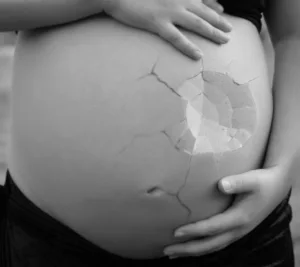


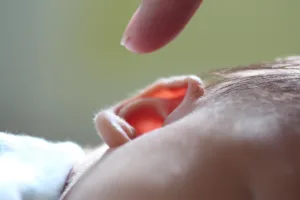




























1 thought on “Baby Weight Chart During Pregnancy in Grams: Discover Your Baby’s Magical Growth Journey 2025”